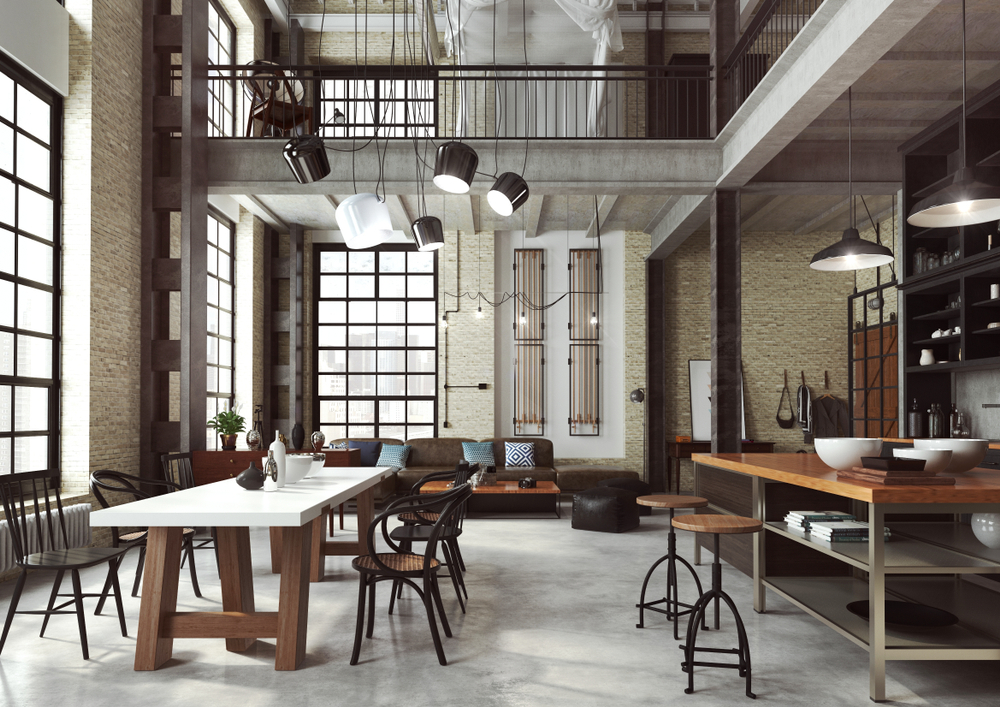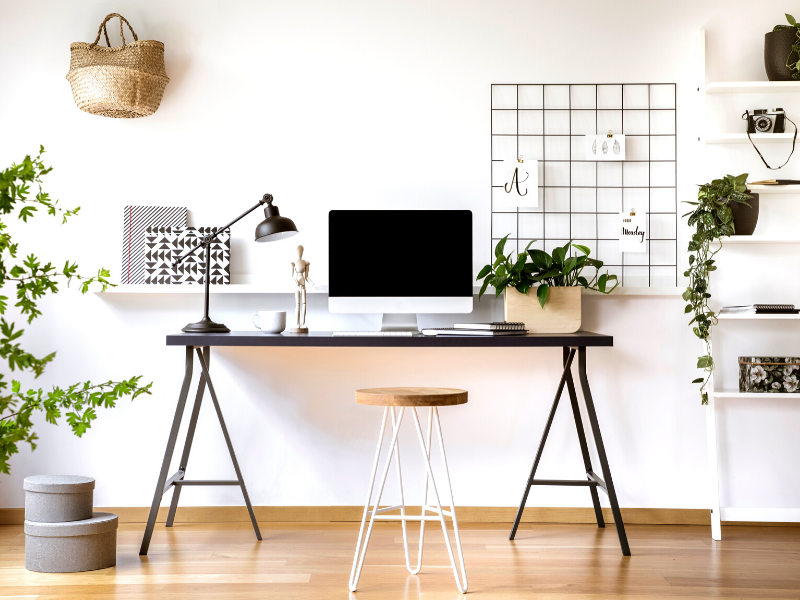Modern Farmhouse
Bringing country living to wherever you call home, modern farmhouse is a style marked by sleek lines, vintage touches, and natural textures that still delivers a comfortable feel. Widespread use of the term “modern farmhouse” did not pick up steam until the mid-2010s, only gaining in popularity since.
- Color: A defining characteristic of the modern farmhouse is a whitewashed palette, which offers a satisfying contrast to the use of natural wood. Cream is also a popular choice. Floral accents are typically used to add depth to the whitewashed backdrop.
- Features: Exposed beams, antique items, and rustic décor form the makeup of a modern farmhouse-inspired dwelling. Barn lighting and gooseneck lamps are the most fitting lighting choices. Round out your modern farmhouse look with shiplap wherever you see fit, board-and-batten siding, and Shaker cabinets for your kitchen.
Mid-Century Modern
A movement begun in—you guessed it—the middle of the twentieth century, mid-century modern (MCM) took shape in a post-war America that saw a migration to urban areas, thus influencing design of the era to be more mindful of smaller living spaces.
- Philosophy: Mid-century modern is as much an artistic movement as a design trend. MCM designs are simple in form, emphasizing function and organic influences, and are meant for everyone to use. Consider these characteristics when planning your décor.
- Color: The color palette most commonly associate with MCM is earthy tones. If you’re looking to add more pop but want to stay true to the earthy palette, experiment with pastels.
- Furniture: Typical MCM design features in furniture include juxtaposing larger pieces with skinny legs, peg legs, the use of lighter-colored woods such as teak, and fun geometric shapes. Beloved favorites include credenzas, dressers, and egg chairs.
Industrial
Inspired by warehouses, factories and unexpected materials such as shipping containers, Industrial design brings home the raw, hardwearing aesthetic typically associated with spaces like reclaimed yards, hangars, and ports. Customization is popular in Industrial design, and like mid-century modern, simplicity is emphasized.
- Color: The Industrial color palette is predominantly neutral. Texture is a more defining feature than color, which gives you flexibility when it comes to decorating. With neutral colors, it is easier to keep your home’s color palette aligned and complimentary.
- Materials: How do you make your home feel like a warehouse? Materials go a long way in accomplishing this. Industrial go-to materials for furniture and beyond include wood, aluminum, copper, steel, stone, and tin. Avoid soft materials like plush that would take away from the hardworking feel inherent in Industrial.
- A touch of nature: Due to its emphasis on recycled and reused materials, plant life and nature-centric accents are fitting compliments to Industrial design. Indoor plants, cactus, and flowers are popular items for sprucing up an Industrial space while adding an appropriately placed touch of color.
Although these trends vary in style and application, they all share a statement-making capability. When incorporating them into your home, know that any of these features will definitively shape the look and feel of your home.
This post originally appeared on the Windermere.com Blog

 Facebook
Facebook
 Twitter
Twitter
 Pinterest
Pinterest
 Copy Link
Copy Link




